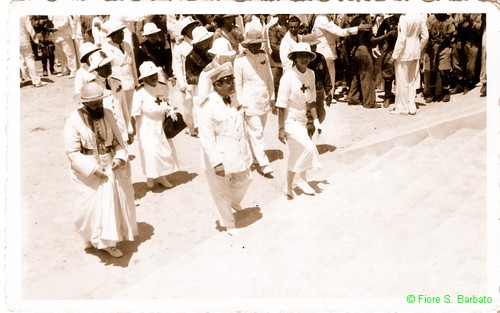When I first started at IMC, I was senior desk officer for East Africa and the Middle East. I had a solid Middle East background, but I had to do a lot of reading on East Africa. I’d been there a few weeks and was starting to realize I’d somehow become an aid worker and I loved it.
I was reading an article about a young mother in Mogadishu. She had a baby and wouldn’t leave her house during the fighting (this was the 2006 fighting, FYI). Finally she ran out of all food and had to leave the house. She took her 3-month old baby with her. She was killed in the cross-fire and NGO workers found her baby frantically trying to nuzzle at his mother’s dead breast.
My son was three months old when I read that. I was a breast-feeding mother. I sat at my desk and cried, for quite a while. And then I thought, “If I had a picture of that, I could fundraise a million dollars, easy.”
Your work saves lives. You can’t do the work without money. It’s very, very hard to keep chasing the money you need to do good, and stay good yourself.
I don’t want to be Kevin Carter.
**********
(image credit: Fiore S. Barbato)
Chosen because I am still too human to be able to search flickr for dead children


In your line of work and in others such as emergency services, I imagine that you are faced with the ugly and horrific every day. If you broke down after seeing every hungry, sick or dying child you would be unable to do your work.
Yet when you feel their pain and suffering, you give your most. How do you balance between callousness and giving away so much of yourself that you have nothing left to give to family, friends and your own sanity?
I don’t think my challenge is “to stay good while doing good”, but to be able to take off the emotional harness I need to do the work I do (talking of “one child dies of hunger every 7 seconds”) and let those I love touch my heart.
At work, I can not use my heart. Not really. Or I would be an ineffective aid worker.
P.
Peter – that’s a good way to think of it. I know I’ve read needs assessments that give horrific statistics, and thought “high infant mortality, lots of maternal death, good, that’ll work…” I actually hadn’t thought about turning all the emotional response and work and turning it back on at home. Is that something you can actually do?
This is an incredibly powerful story. And translating the motivation behind your work to the motivation to raise money for your work is an often missing link — and something you should be proud of.
I don’t mean to self-promote, but I wrote a “manifesto” on just this topic and have gotten some positive feedback, so I thought I’d post the link here. I hope you find it useful.
http://sashadichter.wordpress.com/2008/10/18/a-nonprofit-ceo-manifesto-blame-it-on-seth-godin/
Sasha – I read your manifesto when you first put it up, and loved it. I am good at raising funds. I have a knack for knowing what will get people to give. However – I don’t like that my automatic response to human misery is to mentally repackage it into the form most likely to move potential donors.
I remember this story.
I cried, too. Felt like everytime I remember Rwanda 94: helpless and ashamed.
What you do is your answer to this feeling. Refusing the bite your lip for a second then change the channel.
Be proud.
Alanna, you make an important point. The only thought I have is that we all must go through the world honestly and with real empathy and caring, along with the conviction and dedication to fight for the change we want to see. My guess is we all know in our gut when telling a story is honoring the people whose story we are telling. If it isn’t, we should be very careful, since the story itself also has real power.
Sasha, that is a great way to look at it. I think you’re right – we do know when we’re using people and when we’re doing right by them. You have to remember to stop and check your gut.